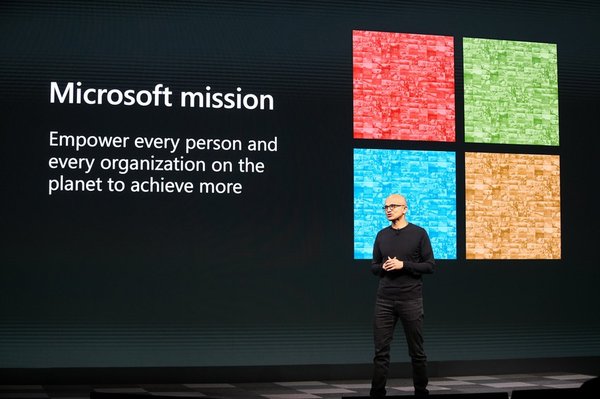As it turns out, investing for the greater good can be profitable, too. That's the story behind the rise in environmental, social, and corporate governance (ESG) investing over the past several years. Investors are flocking to ESG investing by way of ESG-focused funds. Annually, net inflows to sustainability-focused funds from investors around the world total tens of billions of dollars.

Why have ESG funds become so popular? During market contractions in 2018 and 2020, companies with solid ESG track records showed more resilience than their non-ESG peers. As a broader point of comparison, the S&P 500 ESG Index has outperformed the standard S&P 500 (SNPINDEX:^GSPC) over the past three-, five-, and 10-year reporting periods.
What are they?
What are ESG funds?
ESG funds invest in companies that actively manage their environmental, social, and governance risks. These companies commonly pursue a range of sustainability goals, such as:
- Improving energy efficiency
- Reducing emissions
- Forming social advancement opportunities within their communities and workforces
- Preventing human rights violations throughout their supply chains
- Enforcing ethical business practices
- Creating board independence and reporting transparency
In short, companies that prioritize ESG are good corporate citizens. They dedicate significant resources to improving their impacts on people, communities, and the environment.
In other respects, ESG funds function like any other investment fund. When you buy shares in an ESG fund, you own a slice of the fund's holdings and participate in the fund's performance. They can be mutual funds or exchange-traded funds (ETFs).
Exchange-Traded Fund (ETF)
The nine best
Nine best ESG funds to add to your portfolio
ESG funds can vary widely in the assets they hold. Some may suit your values and investment needs better than others. Be sure to review each prospective fund's investing approach carefully, starting with the nine top ESG funds highlighted below.
| Fund Name and Ticker | Year Launched | Net Expense Ratio |
|---|---|---|
| iShares ESG Aware MSCI USA ETF (NASDAQ:ESGU) | 2016 | 0.15% |
| iShares ESG Aware MSCI EM ETF (NASDAQ:ESGE) | 2016 | 0.25% |
| iShares ESG Aware U.S. Aggregate Bond ETF (NYSEMKT:EAGG) | 2018 | 0.10% |
| SPDR S&P 500 ESG ETF (NYSEMKT:EFIV) | 2020 | 0.10% |
| Nuveen ESG Small-Cap ETF (NYSEMKT:NUSC) | 2016 | 0.31% |
| iShares ESG Aware 1-5 Year USD Corporate Bond ETF (NASDAQ:SUSB) | 2017 | 0.12% |
| Nuveen ESG Mid-Cap Growth ETF (NYSEMKT:NUMG) | 2016 | 0.31% |
| Invesco ESG NASDAQ 100 (NASDAQ:QQMG) | 2021 | 0.20% |
| iShares ESG Aware Moderate Allocation ETF (NYSEMKT:EAOM) | 2020 | 0.18% |
1. iShares ESG Aware MSCI USA ETF
This ETF tracks the MSCI USA Extended ESG Focus Index. The index mimics the performance of the broader market while excluding companies involved in civilian firearms, controversial weapons, tobacco, thermal coal, and oil sands. Top holdings by value include Nvidia (NVDA 3.08%), Apple (AAPL 1.88%), and Microsoft (MSFT -0.1%).
This ETF is appropriate as an anchor position for new ESG investors who want to invest in sustainability without materially altering their risk profiles. As long as the fund meets its goal, its performance should be near that of an S&P 500 fund.
2. iShares ESG Aware MSCI EM ETF
This iShares ETF provides ESG-screened exposure to emerging markets. The fund aims to produce returns similar to unscreened emerging market indexes while prioritizing companies with higher ESG scores. The portfolio includes more than 350 large-cap and mid-cap stocks, primarily from China, Taiwan, India, South Korea, Brazil, South Africa, and Saudi Arabia.
Financial companies comprise roughly one-quarter of the fund's value, and information technology stocks are a close second. The other top three sectors are consumer discretionary, communications, and materials.
3. iShares ESG Aware U.S. Aggregate Bond ETF
The iShares aggregate ESG bond fund invests in investment-grade, dollar-denominated bonds with diversified maturities. Treasury securities comprise most of the portfolio, followed by mortgage-backed securities and corporate bonds issued by industrials, financial institutions, and utilities. The fund seeks to match the risk profile of the Bloomberg US Aggregate Bond Index while favoring issuers with higher sustainability ratings.
4. SPDR S&P 500 ESG ETF
This SPDR ETF tracks the S&P 500 ESG Index, which often outperforms the traditional S&P 500. The index excludes S&P 500 companies involved in cluster weapons, landmines, chemical weapons, nuclear weapons, tobacco, or thermal coal extraction.
Also excluded are companies that Sustainalytics has classified as noncompliant with United Nations Global Compact principles. The principles are U.N.-defined business standards covering human rights, employee rights, the environment, and anti-corruption.
This fund's top three holdings by value are Apple, Nvidia, and Microsoft. The SPDR fund weights these positions slightly higher than the iShares ESG Aware MSCI USA ETF.
5. Nuveen ESG Small-Cap ETF
Nuveen's small-cap ESG fund invests in smaller domestic companies with good ESG track records. The stocks are selected from the MSCI USA Small Cap Index, screened with exclusionary rules and then ranked by their comparative ESG performances. The highest-ranked companies in each sector are eligible for the portfolio.
The fund holds more than 500 positions, none of which comprise more than 1% of the portfolio's total value. The top market sectors represented are industrials, financials, consumer discretionary, and information technology.
6. iShares ESG Aware 1-5 Year USD Corporate Bond ETF
This ESG ETF holds investment-grade, U.S. dollar-denominated corporate bonds with maturities ranging from one to five years. The fund tracks the Bloomberg MSCI US Corporate 1-5 Year ESG Index, which includes issuers with the highest MSCI ESG scores in their sectors.
As with other iShares funds, companies substantively involved in civilian firearms, controversial weapons, tobacco, thermal coal, and oil sands are ineligible for inclusion in this ETF.
7. Nuveen ESG Mid-Cap Growth ETF
This ETF holds about 50 mid-sized, U.S.-based companies that are rapidly growing, as measured by projected earnings per share (EPS), historic EPS, and the historic growth of sales per share.
Since the fund features smaller companies, you won't find Apple and Amazon (AMZN 0.73%) in this ETF. Even so, you may recognize a few of the fund's holdings, such as Burlington Stores (BURL 1.47%), GoDaddy (GDDY 1.22%), and Williams-Sonoma (WSM 2.28%).
The fund tracks the TIAA ESG USA Mid-Cap Growth Index, which includes companies with high ESG scores and low carbon scores and that are not involved in controversial business activities.
Exclusive ESG Fund Q&A with Professor Katherine Klein

Katherine Klein
The Motley Fool: According to a recent study by The Motley Fool, 25% of Gen Z and millennial investors reported owning ESG stocks, while 32% said they don’t know what an ESG stock is. While it seems to be gaining popularity, why do you think ESG funds are still not as well-known and do you anticipate this figure to change in the future?
Professor Klein: I’m not surprised that the concept of ESG – and even the term itself – is not well-known among many young (and old) individual investors. When I’ve done an informal survey of friends and family, I’ve observed the same thing: Many people who are quite interested in and engaged in investing don’t know what ESG means. Many haven’t heard or read the term before.
I think a key reason that ESG funds are not well known is that the concept of ESG performance is multifaceted, complex, and abstract. ESG doesn’t mean one thing. It means three things. And those three things are neither intuitively obvious from the names or initials alone, nor clearly intercorrelated. That is, E, S, and G don’t necessarily go hand-in-hand. More on that below.
The meaning of E – environmental performance – is most intuitively obvious and, perhaps relatedly, E is the ESG dimension that has the most commonly accepted metrics. S – social performance – is much less intuitively obvious. What is the social performance of a company? Those unfamiliar with the meaning of ESG might guess that S, social performance, is – what? – how fun the company’s holiday parties are? How strong the company’s presence is on social media? How important it is to be friendly and outgoing if you want a job at the company? How much the company gives to charity? Only one of these guesses – the last one – is at all on target, but charitable donations are, of course, only one facet of a company’s social performance. The meaning of G – governance – is even less intuitively obvious.
I suspect that if you went to a marketing firm and asked for their advice in marketing the term ESG, the first thing they’d say is, “Get rid of the acronym and get rid of those three words, too. There’s got to be a shorter, clearer way to describe what you’re trying to get at.” But, the term and the initials ESG are probably here to stay. Given the growth of ESG funds – despite the confusion and uncertainty regarding the meaning of the term – I do think more and more people will learn the meaning of the term over the next several years.
The Motley Fool: What sort of regulations do you foresee that will ultimately prevent companies from inflating their sustainable practices (a.k.a. greenwashing) and how can consumers make more educated decisions on which ESG funds to invest in?
Professor Klein: This is a really important question and a challenging one to answer. We are starting to see calls for regulations that would greater transparency and stronger corporate disclosures to back-up ESG claims and counter greenwashing (and other forms of impact washing). The more corporations must transparently share their data and practices to back-up their ESG claims, the easier it will be to evaluate a company’s ESG performance.
But, still – even with substantial transparency and disclosure – making educated decisions about which ESG funds to invest in will remain a challenge. ESG is, as I’ve noted, a multifaceted, complex, and abstract concept. A single company may rank high on some “S” metrics (for example, board gender diversity) and weak on other “S” metrics (for example, working conditions in the supply chain). So, assigning a summary number to even a single dimension of ESG for a single company is challenging and perhaps not very informative. Assigning a summary number to a single company for all three dimensions of ESG is more challenging and less informative. Assigning a summary number to an ESG fund comprised of many companies is yet more challenging and less informative.
I hope that the market for information works – that some ratings firms will be shown to be particularly thorough and thoughtful in rating firms’ ESG practices. And I think there is and will continue to be a huge need for independent, academic research on the meaning and consequences of ESG. Then consumers will stand a better chance of making educated choices about which ESG funds they want to invest in.
8. Invesco ESG NASDAQ 100
This equity fund is the ESG version of the popular Invesco QQQ ETF (QQQ 0.87%). The fund identifies suitable stocks from the Nasdaq-100 by screening out those participating in unsavory activities, such as tobacco and gambling. It also excludes companies that are non-compliant with the United Nations Global Compact principles.
The portfolio contains roughly 90 large-cap, Nasdaq-listed stocks, with Nvidia, Microsoft, and Apple at the top of the list.
Related ESG investing topics
9. iShares ESG Aware Moderate Allocation ETF
The iShares ESG Aware Moderate Allocation ETF is a one-stop shop for sustainability-focused investors. The portfolio maintains a composition of about 42% stocks and 58% bonds by way of other iShares ESG funds. The advantages of this structure are that the fund does not need to be rebalanced and is highly diversified.
This ETF is a good choice for the ESG investor who wants a lower-volatility, easy-to-manage ESG portfolio.
FAQ
Best ESG funds: FAQ
What are ESG funds?
ESG funds are pooled investment portfolios that own sustainability-focused companies and organizations. The fund manager defines the criteria used to select investments for the fund. Investors must review the investment approach to ensure it aligns with their financial goals and values.
What does ESG stand for?
ESG stands for environmental, social, and governance. Companies use these three topics to organize and report on corporate sustainability initiatives. Environmental includes pollution control and waste management; social includes employee health and safety, as well as diversity, equity, and inclusion; and governance covers business ethics, board composition, and reporting.
What is the largest ESG fund?
The largest ESG fund, in terms of assets under management, is the iShares ESG Aware MSCI USA ETF.
Is it worth it to invest in ESG funds?
The decision to invest in ESG funds is a personal one. Proponents of ESG investing argue that effective management of sustainability risks is a competitive advantage that makes a business more resilient and, ultimately, more profitable.

















